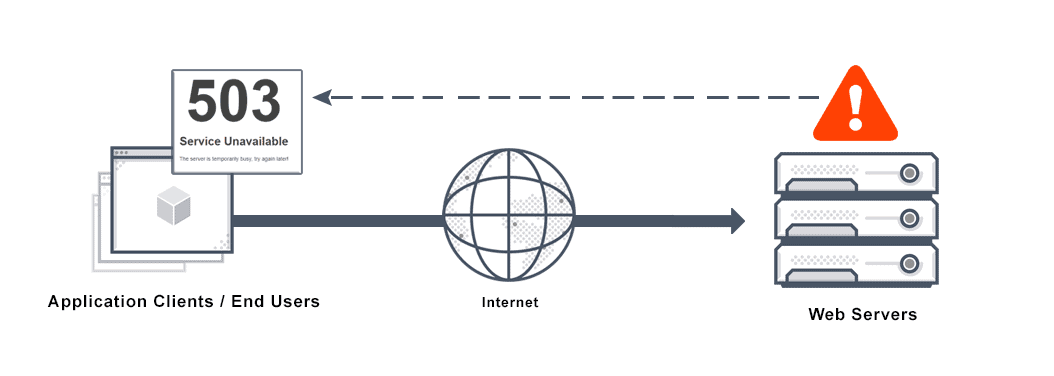Server Overload Definition
Server Overload happens when conditions cause a server to exhaust its resources so that it fails to handle incoming requests. For example, the server will no longer be responsive to requests from its email and web servers as it fails to process them, and the applications will no longer function for users.

What is Server Overload?
There are several factors that help the server handle its load: hard drive speed, memory, and processor speed. Virtual memory or hard drive space and bus speeds may also affect how the server handles the load, but neither is typically implicated in server overload.
Various conditions might create server overload. In many cases operations are using too much bandwidth, and in other situations the system uses too much RAM or runs out of processor power.
Just like the Transportation Security Administration (TSA) plans for a certain number of travelers at each airport, your server is designed to handle certain levels of traffic. When it is overloaded at any given point, it responds too slowly or not at all, and that is reflected in load speeds for websites and user experience with applications and tools, for example.
Why is my Server Overloaded?
There are several common causes of server overload:
Sudden natural traffic spikes. If too many users attempt to use a site at once, it can crash a server, or cause server overload. For example, on the first day of an online sale, the release of an updated version to a game server, or a new web service rollout, this kind of server overload error is common.
Unavailable servers. At times, one server becomes unavailable due to sudden malfunction, hacking, or even planned maintenance. At these times, the backup server handles all extra traffic, and can easily experience server overload.
Malware such as worms and viruses. When a worm or virus infects enough computers or browsers, this type of malware can disrupt normal operations by causing abnormally high server traffic and sudden network spikes. This results in web server overload.
DoS or DDoS denial of service attacks. Hackers launch denial-of-service DoS attacks and distributed-denial-of-service DDoS attacks to render a server unavailable to intended users. These malicious actors flood the network with false requests, and cause the server to deny real requests, crashing it.
Network throughput also has the potential to be confused with a server overload issue. Depending on whether you are running a WAN based server or a LAN based server, network throughput from an ISP could be the source of a bottleneck, not server overload.
How to Fix Server Overload
The best practice here is to guard against server overload in the first place, so watch for and investigate these signs of server overload as you conduct normal monitoring of server performance:
Server overload error codes. The server returns an HTTP error code, such as 503. A 503 error code means the service is temporarily unavailable due to server overload. A 504 gateway timeout error or 504 server overload error code signals an overload because one server is taking too long to respond to another. 408, 500, and 502 are also server overload error codes, all of which signal inappropriate overload conditions.
Delayed requests. The server delays requests, and responses take longer than usual.
Reset or denied TCP connections. Before users see any content returned, the server resets or denies TCP connections.
Partial content. The server returns just a portion of the content the user requests. Sometimes a bug is to blame, but server overload may also be the problem.
A few basic best practices can help prevent server overload. Administrators might designate separate servers or backup servers to handle files of different sizes, use web application firewalls to block unwanted incoming traffic, and/or use site caching to deliver content via alternate sources. However, load balancing is the most effective server overload solution.
How to Prevent Server Overload with Load Balancing
Load balancing distributes network traffic across an organization’s servers as a group, easing the flow of incoming traffic to each server. The load balancer sits between the servers and the client and uses an algorithm to route requests.
If one server fails, the load balancer avoids system disruption by redirecting traffic to other functional servers. Software load balancing also offers real-time scalability, programmability, flexibility, enhanced application security, on-demand deployability, and reduced cost compared to hardware load balancing solutions.
Does Avi Offer a Server Overload Solution?
The Avi platform enables multi-cloud application services including load balancing. It also offers on demand autoscaling, application security, and web application firewall. The Avi Controller has out-of-the-box integrations with data center or public cloud environments. The Avi Platform is built to uniquely take advantage of the closed loop analytics and health scores from the load balancers based on real time traffic conditions and application performance. So, in addition to autoscaling load balancers, Avi can trigger the autoscaling of backend application servers to mitigate the problem of server overload. To help keep your applications secure, available, and responsive, learn more about how Avi prevents server overload.
For more on the actual implementation of load balancing, security applications and web application firewalls check out our Application Delivery How-To Videos.